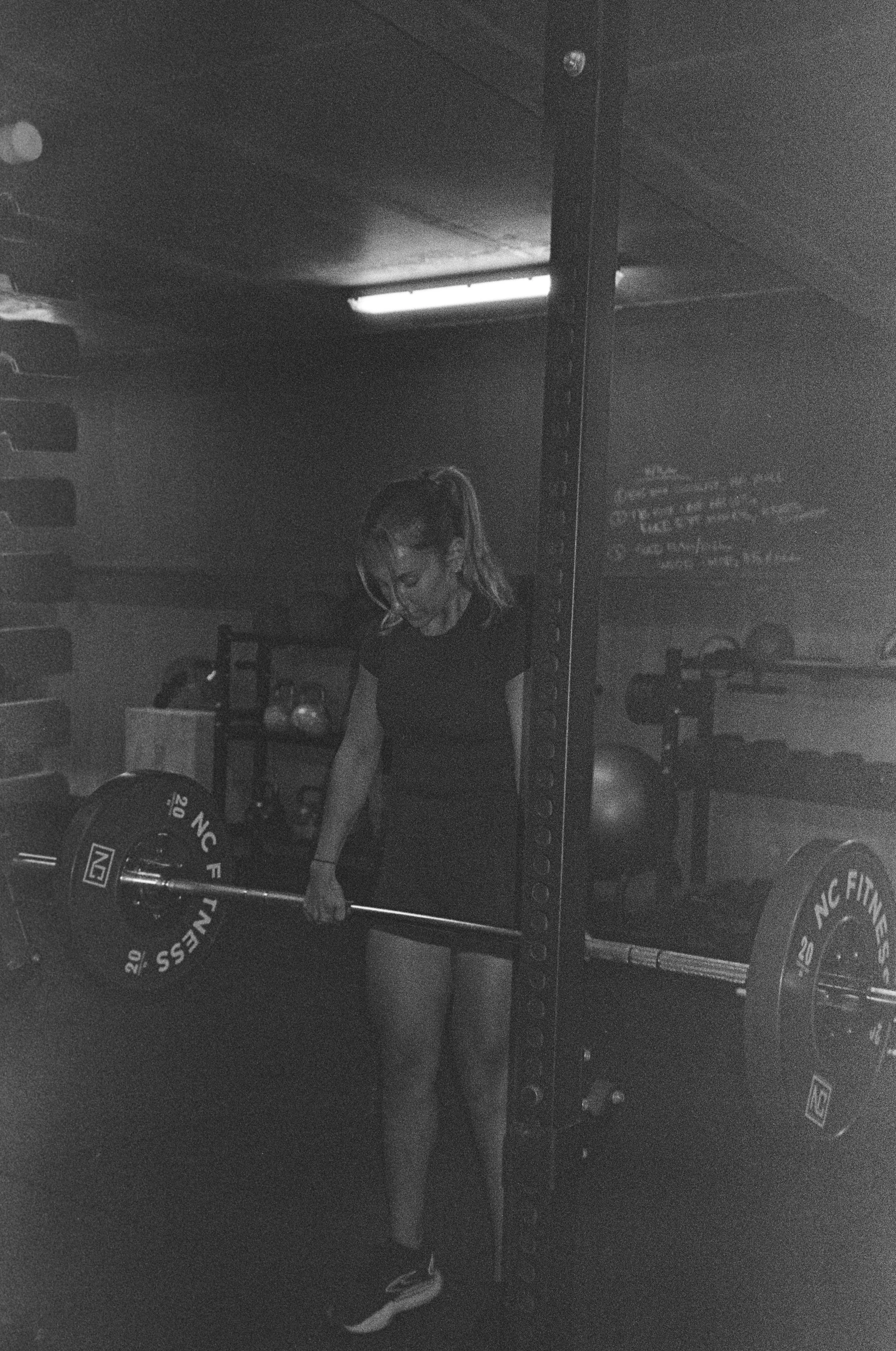Hip Bursitis Treatment Guide: Exercises to Avoid & Fast Recovery Tips
Understanding Hip Bursitis and What Aggravates Your Condition
Are you wondering about the hip bursitis exercises to avoid? When you're dealing with hip bursitis, knowing which exercises to avoid can make the difference between recovery and prolonged pain. At Evolutio Sports Physio, we've seen countless patients who unknowingly made their bursitis worse by doing the wrong exercises at the wrong time.
In case you don't know, hip bursitis is the inflammation of the bursae - tiny fluid-filled sacs that cushion the bones, tendons, and muscles near the hip joint. Hip bursitis, particularly trochanteric bursitis, affects millions of people worldwide. The inflamed bursa becomes irritated and painful when subjected to certain movements and exercises.
Based on my experience of over 13 years treating patients with hip pain, I generally advise my patients here at the clinic to avoid activities and exercises that put excessive strain on the hip joint and irritate the bursae to prevent exacerbating hip bursitis. Understanding what aggravates hip bursitis is crucial for your recovery journey.
Here are the top 5 hip bursitis and trochanteric bursitis exercises to avoid in 2025:
Critical Hip Bursitis Exercises to Avoid During Acute Phases
High-Impact Activities That Worsen Bursitis
Running and Jogging should be completely avoided during acute hip bursitis flare-ups. The repetitive impact and hip flexion motion can severely aggravate the inflamed bursa, particularly in trochanteric bursitis cases. Even light jogging can set back your recovery by weeks.
Jumping exercises including burpees, jump squats, and plyometric movements place enormous stress on the hip bursa. These exercises to avoid with hip bursitis can cause micro-trauma to already inflamed tissues.
High-intensity interval training (HIIT) often combines multiple problematic movements. The quick direction changes and impact forces make HIIT one of the worst exercise choices during bursitis recovery.
Specific Movements That Aggravate Hip Bursitis
Deep Squats
Deep squats are an essential exercise for strengthening the muscles of the lower body, however, they can be bad for those who suffer from hip bursitis, a condition where the bursa in the hip joint becomes inflamed and painful due to chronic irritation. This is because deep hip flexion increases pressure on the greater trochanter (side of your hip) and compresses the inflamed bursa. It can also tighten structures like the iliotibial band (ITB) and gluteal tendons, which rub more against the bursa when the hip is fully flexed, kind of like squeezing an already sore spot harder. If the surrounding muscles (like glutes, hip flexors) aren’t strong or firing properly, deep squatting stresses the bursa even more because the hip isn’t being stabilised well.
Lunges with excessive range of motion
Particularly forward lunges, where the front knee travels far beyond the toes, can inflame the hip bursa through excessive hip flexion and internal rotation. If you have been diagnosed with hip bursitis, then you may want to avoid doing lunges completely, or modify them in a way that reduces the strain on your affected hip. An alternative to lunges is stepping back, or doing shorter lunges which may be more tolerable due to the decreased pressure placed on the hip bursa.
Step-ups on high platforms
These force your hip into extreme flexion angles that compress and irritate the bursa. Step-ups should be avoided entirely during acute phases and modified significantly during recovery.

Resistance Training Exercises to Avoid for Hip Bursitis
Hip abduction exercises against heavy resistance
Hip Abduction against heavy resistance can actually worsen trochanteric bursitis by overworking the already irritated tissues around the greater trochanter.
Leg press with feet positioned too low
Leg Press forces excessive hip flexion, compressing the anterior hip structures and potentially aggravating iliopsoas bursitis.
Deadlifts with poor form
deadlifts with poor form or excessive weight can stress multiple hip structures simultaneously. The hip hinge movement, when performed incorrectly, becomes one of the exercises for hip bursitis to avoid completely.
Advanced Hip Bursitis Exercises to Avoid List
Yoga and Pilates Movements to Modify
Pigeon pose and other deep hip flexor stretches can aggravate both trochanteric and iliopsoas bursitis. These stretches force the hip into positions that compress inflamed tissues.
Warrior poses in yoga often require sustained hip flexion and abduction that can irritate the bursa, particularly when held for extended periods.
Pilates hundred exercise requires sustained hip flexion that can worsen anterior hip bursitis symptoms.
Sports-Specific Activities to Temporarily Eliminate
Cycling with aggressive positioning where your hips are forced into extreme flexion can worsen both types of hip bursitis. The sustained hip flexion position is problematic for many patients.
Swimming freestyle with poor technique often involves hip positions that aggravate bursitis. The repetitive motion combined with possible hip impingement makes this an exercise to avoid during acute phases.
Tennis and racquet sports involve quick directional changes, lunging movements, and often single-leg support that can stress the hip bursa.
What Aggravates Hip Bursitis: Beyond Exercise
Daily Activities That Worsen Symptoms
Prolonged sitting particularly in low chairs or car seats, maintains hip flexion that can aggravate iliopsoas bursitis. This position compresses the bursa and reduces blood flow to healing tissues.
Sleeping on the affected side directly compresses the trochanteric bursa and is one of the most common aggravating factors patients report.
Climbing stairs repeatedly can aggravate symptoms through the repetitive hip flexion and weight-bearing nature of the activity.
Crossing legs while sitting forces the hip into internal rotation and adduction, potentially compressing the lateral hip structures.
Movement Patterns That Increase Inflammation
Hip internal rotation under load commonly occurs during squatting movements and can compress the hip bursa, particularly in people with poor movement patterns.
Excessive hip adduction where the knee falls inward during movement, places additional stress on the lateral hip structures.
Rapid acceleration and deceleration as seen in sports or sudden directional changes during daily activities.
Understanding Different Types of Hip Bursitis
Trochanteric Bursitis Exercise Restrictions
Trochanteric bursitis affects the bursa located over the greater trochanter (the bony prominence on the side of your hip). Trochanteric bursitis exercises to avoid include:
Side-lying leg lifts with resistance
Wide-stance squats
Any exercise requiring prolonged side-lying positions
Cross-training elliptical machines with wide stride patterns
Iliopsoas Bursitis Specific Avoidances
Iliopsoas bursitis affects the bursa located at the front of the hip joint. Exercises to avoid with iliopsoas bursitis include:
High knee marching
Uphill walking or running
Bicycle crunches
Any exercise requiring sustained hip flexion beyond 90 degrees
Ischial Bursitis Exercise Modifications
Ischial bursitis exercises to avoid focus on reducing pressure on the sitting bones:
Rowing exercises
Seated exercises on hard surfaces
Prolonged cycling
Any activity requiring prolonged sitting
Safe Exercise Alternatives During Hip Bursitis Recovery
Low-Impact Cardiovascular Options
Water walking provides cardiovascular benefits without impact stress. The buoyancy reduces weight-bearing forces while allowing movement.
Recumbent cycling with proper positioning can maintain fitness while avoiding problematic hip angles.
Upper body ergometer training maintains cardiovascular fitness without involving the hips.
Gentle Strengthening Approaches
Isometric exercises can begin strengthening without movement that might aggravate the bursa.
Resistance band exercises in pain-free ranges allow progressive strengthening.
Pool exercises utilise water resistance for gentle strengthening with reduced gravity effects.
Signs Your Hip Bursitis Is Improving
Reduced morning stiffness often indicates inflammation is subsiding.
Ability to lie on the affected side suggests the acute inflammatory phase is resolving.
Decreased pain with walking indicates tolerance for basic functional activities is returning.
Red Flags to Pause Exercise Progression
Increased night pain suggests ongoing inflammation that requires rest.
Swelling or warmth around the hip indicates active inflammation.
Pain that worsens during or after exercise means you're doing too much too soon.
Professional Treatment and Exercise Guidance
At Evolutio Sports Physio, we specialise in hip bursitis rehabilitation and can provide personalised exercise modifications. Our hip physio Melbourne services include comprehensive assessment and treatment planning.
For those dealing with related conditions, our running physio specialists understand how hip bursitis affects athletic performance. We also offer strength and conditioning programs explicitly designed for bursitis recovery.
If you're experiencing concurrent issues, our knee physio Melbourne team can address compensatory problems that often develop with hip bursitis.
The Best Exercises for Hip Bursitis
The best exercises for hip bursitis will depend heavily on the level of bursitis, and it's best to see a Physiotherapist first so they can see what activities would suit you. However, we usually start with adding mini powerbands around thighs and ankles to reinforce the gluteal muscles to activate and strengthen. Ideally, if we get everything else intense around your hip, there will be less load and irritation on the bursa. This includes the back, hamstring and groin.
Partial Squats with or without Band
The first exercise that is good for hip bursitis is a partial squat. Stand with your feet shoulder-width apart and hands on a stable surface for support (e.g., a chair or counter). Slowly bend your knees and lower your body a few inches while keeping your back straight. Hold for a moment, then straighten your legs. Perform 10-15 repetitions.
2. Glute Bridges
Secondly, Glute Bridges are good for Hip Bursitis. Lie on your back with your knees bent and feet flat on the floor. Lift your hips off the ground until your body forms a straight line from your shoulders to your knees. Hold for a few seconds, then lower your hips back down. Perform 10-15 repetitions.
You can also make this harder over time if the front of your hip isn’t irritated with Barbell hip Thurst, or put a kettlebell on your stomach and glute bridge against that resistance to make it harder over tiem.
3. Neutral Pelvic Tilts
Here’s a hint. Most people with hip bursitis have a tight front hip and they are locked into anterior pelvic tilt. So lie on your back with your knees bent and feet flat on the floor.Gently tilt your pelvis backward to flatten your lower back against the floor. Try to draw in your pelvic floor at the same time (think stopping yourself peeing) Perform several repetitions, focusing on controlled movements.
4. Any Further Strengthening around the Hip
Literally let’s not forget everything around the Hip. There’s a good chance if you have hip bursitis you have weak adductors, hamstrings, glute max, lower back extensors. So why not strengthen anything you can that’s not painful that will support your hip once it becomes pain free? Remember don’t get tunnel vision on just your hip muscles.
Hip Bursitis Exercises to Avoid - Frequently Asked Questions
What exercises should I avoid with hip bursitis?
High-impact activities like running, jumping, and deep squats should be completely avoided during acute hip bursitis. Specifically avoid exercises that force your hip into extreme flexion (like deep lunges), require repetitive hip abduction against resistance, or involve rapid directional changes. The key is avoiding movements that compress or repeatedly stress the inflamed bursa.
Can I still exercise with trochanteric bursitis?
Yes, but you need to modify your routine significantly. Trochanteric bursitis exercises to avoid include side-lying exercises, wide-stance squats, and any movement that requires lying on the affected side. Focus instead on gentle range of motion exercises, water-based activities, and upper body strengthening that doesn't stress the hip.
What aggravates hip bursitis the most?
The biggest aggravating factors include sleeping on the affected side, prolonged sitting (especially in low chairs), climbing stairs repeatedly, and high-impact activities. Exercise-wise, deep squats, running, jumping movements, and aggressive stretching into hip flexion are among the worst offenders for most types of hip bursitis.
How long should I avoid certain exercises with hip bursitis?
This depends on the severity and type of your bursitis. Acute inflammatory phases typically require 2-6 weeks of avoiding aggravating exercises. Some exercises, like deep squats or high-impact activities, may need to be modified permanently or reintroduced very gradually over 3-6 months. The key is listening to your body and working with a qualified physiotherapist.
Are there specific exercises to avoid with ischial bursitis?
Ischial bursitis exercises to avoid include rowing, prolonged cycling, seated exercises on hard surfaces, and any activity requiring sustained pressure on your sitting bones. Hamstring stretches should also be modified to avoid pulling on the ischial tuberosity. Focus on standing exercises and use cushioning when sitting is necessary.
Is walking good for hip bursitis or should I avoid it?
Walking is generally beneficial for hip bursitis when done correctly, but there are important modifications. Avoid walking on uneven surfaces, steep hills, or for excessive distances during acute phases. Start with short, flat walks and gradually increase as tolerated. If walking increases your pain during or after the activity, you're doing too much.
What stretches should I avoid with hip bursitis?
Avoid aggressive hip flexor stretches (like pigeon pose), deep glute stretches that require sitting, and any stretch that reproduces your pain. ITB stretches should be modified to avoid compressing the lateral hip. Gentle, pain-free stretching is okay, but forced stretching into painful ranges will worsen inflammation.
Can I do squats with hip bursitis?
Deep squats should be completely avoided with hip bursitis. Shallow squats (quarter squats) may be tolerated once acute symptoms subside, but only if they don't reproduce pain. Many people with hip bursitis need to permanently modify their squatting technique, using higher stopping points and ensuring proper hip mechanics.
Should I stop all exercise when I have hip bursitis?
No, complete rest often isn't beneficial for bursitis recovery. The key is modifying your exercise routine to avoid aggravating movements while maintaining fitness through safe alternatives. Pool exercises, upper body training, and gentle range of motion can usually continue. Work with a physiotherapist to develop an appropriate modified program.
What gym exercises should I avoid with greater trochanteric pain syndrome?
Avoid hip abduction machines, side-lying leg lifts, deep squats, lunges with wide steps, and any exercise requiring you to lie on your side. Step-ups, lateral movements, and exercises requiring single-leg balance should also be avoided during acute phases. Focus on bilateral, supported movements in pain-free ranges.
How do I know if an exercise is making my hip bursitis worse?
Warning signs include increased pain during the exercise, pain that persists more than 2 hours after exercise, increased morning stiffness the next day, or return of night pain. Any exercise that causes sharp, shooting pain should be stopped immediately. Progress should feel gradual and comfortable, not forced or painful.
Are yoga poses safe with hip bursitis?
Many yoga poses need significant modification with hip bursitis. Avoid deep hip openers like pigeon pose, warrior poses that require sustained hip flexion, and any pose requiring pressure on the lateral hip. Gentle modifications focusing on upper body and core work are usually safe. Always inform your instructor about your condition.
Can I use an elliptical machine with hip bursitis?
Elliptical machines can be problematic for hip bursitis, especially those with wide stride patterns that force hip abduction. If you use one, choose a shorter stride length and stop if you experience any hip discomfort. Recumbent bikes are often a better choice for maintaining cardiovascular fitness during recovery.
What resistance training exercises are safe with hip bursitis?
Focus on upper body exercises, gentle core work that doesn't require hip flexion, and lower body exercises in pain-free ranges using light resistance. Avoid heavy squats, deadlifts, lunges, and hip abduction exercises. Resistance band exercises are often well-tolerated and allow for controlled progression as your symptoms improve.
Should I avoid all running and jogging with hip bursitis?
During acute phases, yes - all running and jogging should be avoided as the repetitive impact can significantly worsen inflammation. Even once symptoms improve, return to running should be gradual, starting with very short distances on flat, soft surfaces. Many people need to permanently modify their running technique or incorporate more cross-training to prevent recurrence.
Getting Professional Help for Hip Bursitis
If you're struggling with hip bursitis and unsure about exercise modifications, professional guidance is crucial. Our team at Evolutio Sports Physio understands the complexities of bursitis recovery and can provide personalised exercise programs that promote healing while maintaining fitness.
Don't let hip bursitis derail your active lifestyle permanently. With proper exercise modifications and professional treatment, most people can return to their activities safely. The key is knowing which exercises to avoid during each phase of recovery and having a structured plan for progression.
For comprehensive hip bursitis treatment and exercise guidance, book an appointment with our experienced physiotherapy team. We'll help you navigate the recovery process safely and efficiently, ensuring you avoid the common pitfalls that prolong healing time.




